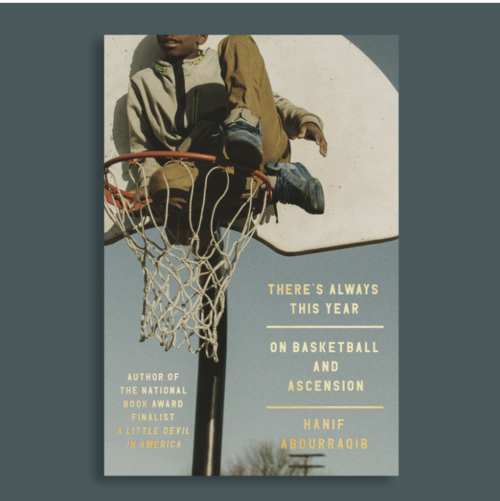This year’s Upper School community read was Hanif Abdurraqib’s “There’s Always This Year: On Basketball and Ascension.” Abdurraqib, a poet, essayist, novelist and cultural critic, has received many awards. These include the prestigious MacArthur “genius grant,” a $800,000 dollar grant recognizing brilliance in artistic and scholarly fields, to a Windham-Campbell prize: a writing award established at Yale roughly fifteen years ago to recognize English language writers worldwide. In 2021, his book, “A Little Devil in America: In Praise of Black Performance,” won the Gordon Burn Prize, was a finalist for the National Book Award and landed on top ten book lists for the Chicago Tribune and the Philadelphia Inquirer among others.
Published earlier this year and a national bestseller, “There’s Always This Year” loosely chronicles Abdurraqib’s journey as a person of color growing up in a low income neighborhood in Columbus, Ohio. The text also tackles larger themes of race, poverty, hope and loss. From growing up to basketball to poverty, the book can be viewed from a number of angles, making it easier for readers to identify with Abdurraquib’s words in one way or another.
Dr. Alwin Jones, the English Department Chair, shared that this variation of themes was a main factor in choosing this book as the community read. He explained that the hope was these various themes would help more students relate to the story.
Despite the widespread acclaim for the book and author, reports from students were mixed. Most people could find an angle they could identify with and used that as their entry point. For example, some found themselves reflected in Abdurraqib’s love of his city. Others drew parallels between the author’s love for his “beloveds” with their own care for loved ones. Other students, though, felt that certain themes detracted from their enjoyment of the book. For students who don’t know much about basketball or keep up with professional teams, the book’s focus on the sport made it harder to understand. References to players or teams would derail reading and make total immersion nearly impossible.
But even this barrier didn’t erase what really makes “There’s Always This Year” unique. What really makes the book special is its loosely chronological structure, following Abdurraqib’s life and experiences, jumping through time and space. At the end of the first section, “Pregame,” he shifts from a reflection on aging and gray hairs to a discussion on the COVID-19 pandemic and the emptiness of Columbus during the 2020 shutdown. Despite the shifts, his writing flows naturally. The branching stories, no matter how varied, never seem forced or out of place. Rather, Abdurraqib meanders through memories, telling his story through different lenses. These offshoots work to keep the story moving and the reader attentive. For some Fieldston students, the style of storytelling had the opposite effect and left them struggling to catch up.
Students have mixed feelings about the mutability of the book’s structure. One Form IV student, who asked to stay anonymous, said that “the shifts in perspective made the book more engaging.” Others shared that they find it disruptive, making it hard to follow along with the overarching narrative. Cristina Ellis, a Form V student, went so far as to say that she “[was] frustrated by Abdurraqib’s inability to finish a thought.”
Despite these challenges, the general consensus was in favor of the book. From its relatable themes to the unfiltered honesty Abdurraqib pours onto the page, “There’s Always This Year” was a fitting choice for a community read.






